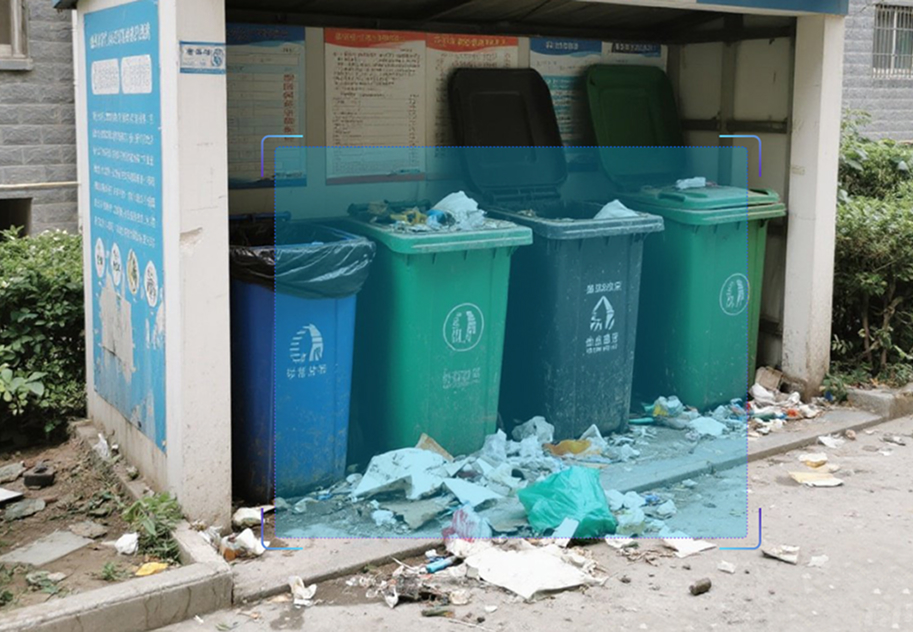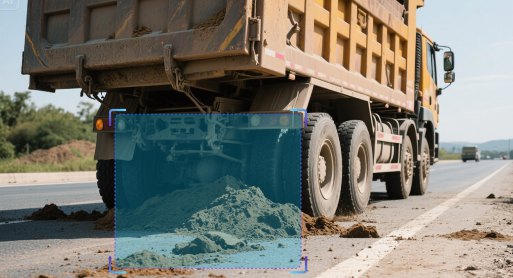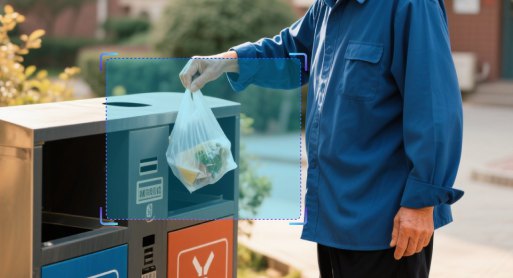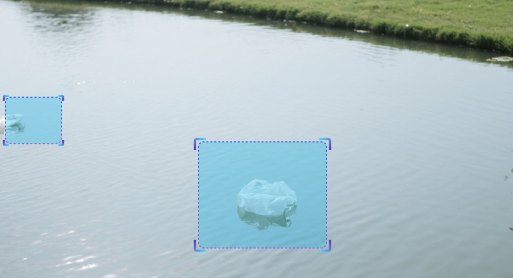
Uncollected Waste Detection

Algorithm Introduction
This AI vision-based algorithm is designed to automatically identify and alert on common roadside litter (such as waste paper, plastic bags, food residues, etc.). The system can integrate with public surveillance networks to enable intelligent monitoring of waste cleanup efficiency. Supporting multiple application scenarios including routine inspections and anomaly detection, it helps enhance urban cleanliness and sanitation management efficiency.
- ● Lighting Conditions: Minimum 50% bright pixel ratio (grayscale value >40)
- ● Image Requirements: Recommended resolution 1344×800
- ● Target Size: Minimum 40×66 pixels
Application Value
-

Urban Roadways
The algorithm conducts round-the-clock monitoring of pavement cleanliness on main roads and back alleys to promptly identify accumulations of household waste and debris, thereby assisting sanitation departments in implementing dynamic cleaning schedules. -

Metro Stations
At heavily trafficked subway entrances and exits, the algorithm detects items and trash left behind by passengers to ensure the cleanliness of these urban gateways. -

Parks
Install surveillance points in landscaped scenic areas and recreational zones to automatically detect unattended litter to remove it with efficiency, thereby enhancing park operational efficiency and visitor experience. -

Business Districts
In office buildings and plaza areas, the algorithm identifies accumulated waste, cardboard boxes, and bags to assist property management in maintaining a high standard of cleanliness in office spaces.
FAQ
-
Algorithm AccuracyAll algorithms published on the website claim accuracies above 90 %. However, real-world performance drops can occur for the following reasons:
(1) Poor imaging quality, such as
• Strong light, backlight, nighttime, rain, snow, or fog degrading image quality
• Low resolution, motion blur, lens contamination, compression artifacts, or sensor noise
• Targets being partially or fully occluded (common in object detection, tracking, and pose estimation)
(2) The website provides two broad classes of algorithms: general-purpose and long-tail (rare scenes, uncommon object categories, or insufficient training data). Long-tail algorithms typically exhibit weaker generalization.
(3) Accuracy is not guaranteed in boundary or extreme scenarios.
-
Deployment & InferenceWe offer multiple deployment formats—Models, Applets and SDKs.
Compatibility has been verified with more than ten domestic chip vendors, including Huawei Ascend, Iluvatar, and Denglin, ensuring full support for China-made CPUs, GPUs, and NPUs to meet high-grade IT innovation requirements.
For each hardware configuration, we select and deploy a high-accuracy model whose parameter count is optimally matched to the available compute power.
-
How to Customize an AlgorithmAll algorithms showcased on the website come with ready-to-use models and corresponding application examples. If you need further optimization or customization, choose one of the following paths:
(1) Standard Customization (highest accuracy, longer lead time)
Requirements discussion → collect valid data (≥1 000 images or ≥100 video clips from your scenario) → custom algorithm development & deployment → acceptance testing
(2) Rapid Implementation (Monolith:https://monolith.sensefoundry.cn/)
Monolith provides an intuitive, web-based interface that requires no deep AI expertise. In as little as 30 minutes you can upload data, leverage smart annotation, train, and deploy a high-performance vision model end-to-end—dramatically shortening the algorithm production cycle.






